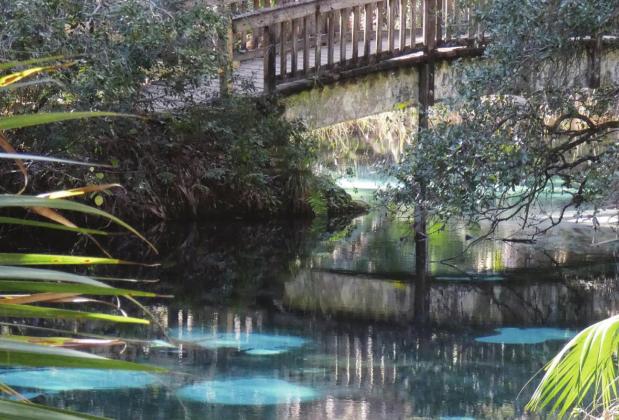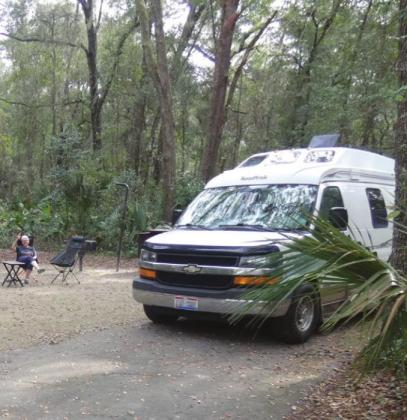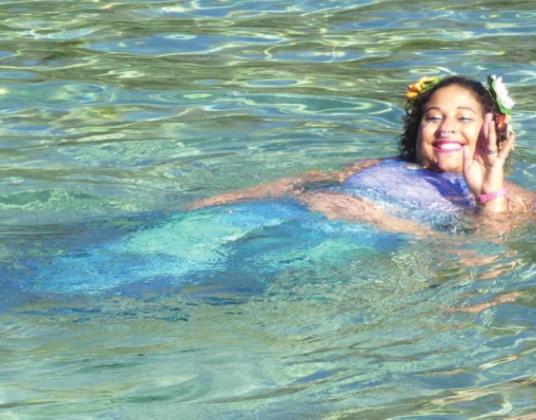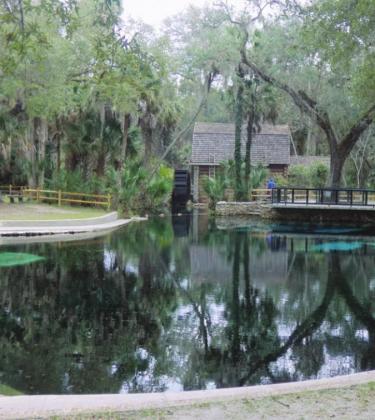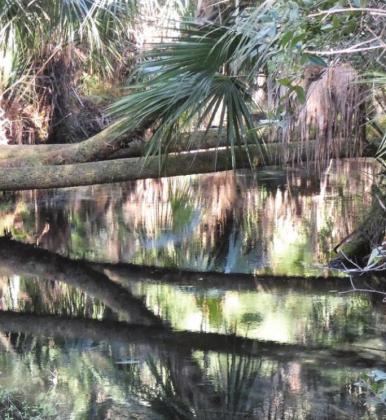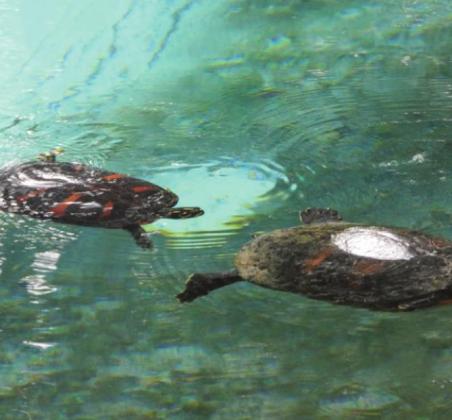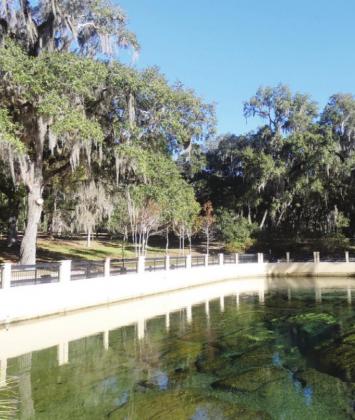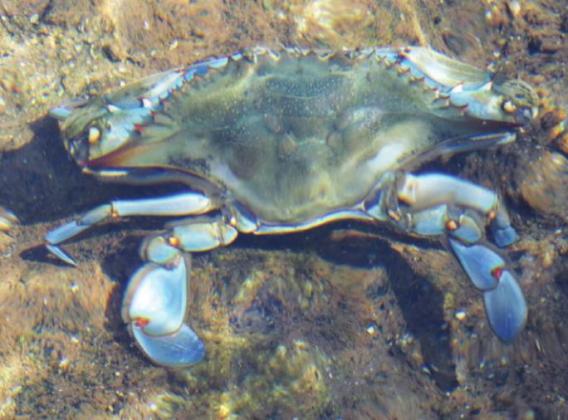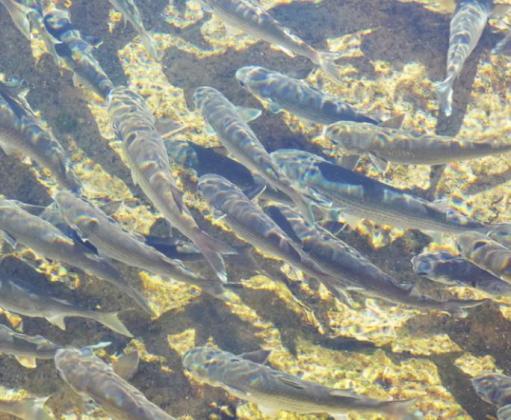IN THE FIRST YEARS OF RETIREMENT, Shirley and I typically spent winters in Florida. Our primary destination was Everglades National Park at the tip of Florida where the weather was reliably pleasant and the wildlife was magnificent. On the way there, we usually paused for a few days or a week at Alexander Springs in Central Florida. We returned in late February to attend the horse trials at nearby Rocking Horse Stables as we gradually made our way home.
In 2012, we took a little detour. Continued around the Gulf, across Texas and New Mexico to Arizona. Whoa! Who knew the Sonoran Desert could be so gorgeous? After that experience, our primary destination became Organ Pipe Cactus National Monument, smack dab on the Mexican border in Arizona. We also favored remote, quiet locations such as the wildlife refuges at Buenos Aires and Las Cienegas. But in the last couple of years, border security has deteriorated, there was no way to predict how COVID rules might fluctuate from day to day, and the cost of fuel doubled. So, this year we returned to Florida. I know. It’s a real sacrifice.
Before COVID, we rarely had a problem getting a camp site virtually anywhere in the country. That changed when millions of people decided that camping was a good way to escape house arrest and that working remotely could mean working from anywhere. RV sales hit all-time records. A few minutes later, demand for camp sites hit alltime records. Rather than deal with the influx of campers in person at the entry station, federal facilities (national parks, national forests, Corps of Engineers, BLM) decreed that reservations must be obtained through recreation.gov. State facilities referred prospective campers to reserveamerica.com. That is, you might be able to get reservations if they actually remained open. At Yellowstone, for example, eight of the 12 campgrounds were closed. Some state parks were closed altogether. So, there were more people than ever who wanted to get into fewer places than ever.
Further complicating things was what I think of as Campground Ping-Pong. Recreation.gov might show a site available—but for only a night or two out of the five you want. So, you look for another site or sites you might get on those other nights and bounce around the campground. Assuming that it is not a weekend when they are fully booked by people who were smart enough to make reservations well in advance.
That’s why Shirley insisted, before Thanksgiving, that we log on in order to reserve a week at Alexander Springs. Even then we ended up playing ping-pong with three nights in one site and four in another. Alas and woe is me. Why is life so hard?
There are about 1,000 natural springs in Florida because much of the state rests on a base of porous limestone. Springs form where surface water has percolated down through layers of rock. The weight of this new water creates pressure on the existing ground water, pushing it through cracks and crevices until it finds an exit. Thirty-three of these springs are classified as first-magnitude; that is, they flow at the rate of at least 100 cubic feet per second or about 65 million gallons a day.
Springs are popular for recreation because the water is as clear as it is possible to get and at a constant temperature of 70-72 degrees. That means it feels warm in winter and cool in summer and attracts swimmers year round. In addition to families, the swimmers at Alexander Springs include a steady stream, so to speak, of snorklers and people taking scuba lessons. The head of the springs has several vents at a depth of about 25 feet, but most of the 300-foot-wide basin has a sandy bottom and is shallow enough for wading. Small children and beginning scuba students don’t feel intimidated. There is a small, narrow band of sandy beach held in place by a low concrete wall with stairs that make it easy to enter and leave the water.
This year, we were entertained when a dozen members of the Florida Mermaids arrived with vividly colored, scaly costumes that included broad, finny tails. They said that they do regular shows over at Weeki Wachee Springs.
After our stay at Alexander Springs, we relocated to Juniper Springs just 20 minutes away. The experience there is quite different. Juniper is more formally developed and landscaped than the relatively natural environment around Alexander. The pool is entirely enclosed within terraced walls except for the narrow exit where the flowing water drives a water wheel at the millhouse built by the CCC in 1936. As at Alexander, the pool itself is mostly shallow and family friendly with a natural sandy bottom and is only eight feet deep at the vents. Juniper is also first-magnitude, so the water flow is constant and substantial. There is a place for canoes and kayaks to be put in just downstream from the mill.
It is a picturesque setting but, we think, not as pretty as the much smaller springs at Fern Hammock just a ten-minute walk through the woods. There you can watch as water pulses up rhythmically through bright white sand at the rate of about 10 cubic feet per second—a tenth that of the first-magnitude springs. There is a mystical sapphire-blue glow as the sky is reflected off the water and white sand bottom. The small pond formed at the Hammock is surrounded by palmettos and live oaks with their ubiquitous Spanish moss. The oaks send out horizontal branches barely above the water and mirrored in it. No swimming or wading allowed at Fern Hammock. Theoretically, this is because of the alligators, though, unlike Alexander Springs, we have never seen one there. Turtles and fish though.
When our reservations at Juniper expired after a week, there were no sites available for four days, so we couldn’t even play ping-pong. Fortunately, there was good news on recreation.gov. It turns out that nearby Salt Springs has one of the very few campgrounds in the whole system that still have a few first-come campsites. It is also the only campground in Ocala National Forest with full hookups for RVs (water, electricity, and sewer). I called the campground directly to ask what the chances were of getting one of the first come sites. Tammy said, “Not very likely, but you can show up at 7:00 and get in line. The gate opens at 8:00.”
So we did.
Nothing available. Yet. Current occupants have until checkout time to either re-enlist or vacate. Lori at the registration desk offered to take all our information and give me a call if something opened up. “Should know pretty soon—by 1:00,” she said. (I thought her definition of “pretty soon” was rather broad.) Meanwhile, we went to a coin laundry to make productive use of the wait time. But Lori under-promised and overperformed. At 10:15, just as we were folding clothes, she called to say we were in.
Salt Springs is another of the first-magnitude. The water is not what you or I would call salty, but from a chemist’s point of view it has enough magnesium, potassium, and sodium to justify the name. There are other attributes much easier to recognize and appreciate.
There is a large picnic area in the shade of live oaks. An attractive retaining wall with railing extends around three-fourths of the pool, so you can peer down into the water. And you will want to. The rocky vents at the head of the pool are only a few feet down and attract large blue crabs and mullet fish. The water is not deep enough for scuba diving, but snorkelers enjoy it. Part of the fun is that the flow rate from the vents is so heavy that swimmers are pushed back by the current as they try to get down there.
Even the mullet seem to have a hard time staying down as they become flying fish. Foot-long mullet jumping three or four feet in the air can make quite a splash. One explanation is that just about every predator fish in Florida feeds on mullet and jumping is their way to escape. We didn’t see any predators in the springs, just hundreds of those flying mullet. Still, some predators carry fishing rods. Floridians and other Southerners have been known to feast on smoked or fried mullet. I asked if they are good to eat. “Well, they are safe to eat,” was the ringing endorsement.
After three weeks at the springs, we continued south to Everglades National Park, Big Cypress Preserve, and Sanibel Island. Then we returned for another three weeks. When it is time for a walk in a Florida park, we are always happy when there is a spring ahead.
LeMoyne Mercer is the travel editor for Healthy Living News. If you are contemplating a trip, you might want to see photos and information about numerous destinations at AnotherWalkInThePark.blogspot.com. ✲

